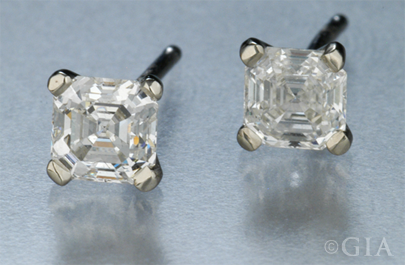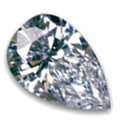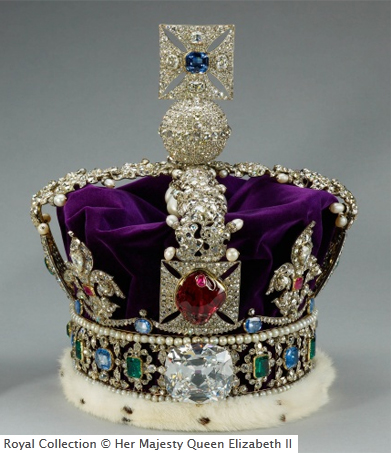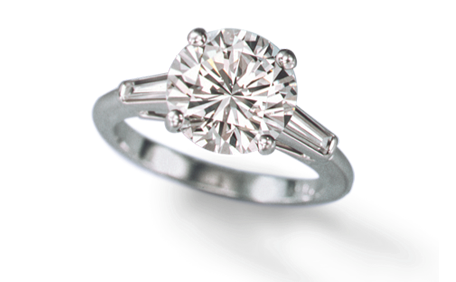Some diamond cut’s never go out of style, especially when they boast a royal heritage and have been redesigned and reinvented. Such is the case with the popular Asscher cut. (more…)

Some diamond cut’s never go out of style, especially when they boast a royal heritage and have been redesigned and reinvented. Such is the case with the popular Asscher cut. (more…)

When it comes to diamonds, most consumers tend to use the words “cut” and “shape” interchangeably. But for diamond professionals, there is a big difference. Diamond Shape refers to the outline of the stone (pear, oval, round, etc.). Diamond cut refers to a stone’s facet arrangement. So a shape can be faceted in a variety of ways, or cutting styles. (more…)

Queen Elizabeth ascended the throne in February 1952, more than 60 years ago. When she was coronated a year later, she wore the ultimate symbol of royal authority – the Imperial State Crown.
This is the quintessential crown. Set with 2868 diamonds in silver mounts, it has an open work gold frame and is fitted inside with a purple velvet cap and ermine fur headband. The jewels mounted on the frame are breathtaking. (more…)

A diamond solitaire refers to any piece of jewelry with a single diamond. Diamond solitaires can be a ring, necklace, earring or even men’s jewelry. They have come to mark some of the most significant occasions in one’s life, like sweet-sixteen, anniversaries, and the most notable, an engagement proposal. (more…)

Diamonds are famously known for being one of the hardest substances on earth – we know you’ve heard the rumor that a real diamond can cut glass. But do you know why diamonds are so hard? (more…)
Synthetic diamonds are grown in a laboratory and have essentially the same chemical composition and crystal structure as natural diamonds formed millions of years ago. In the last 30 years, gem quality synthetic diamonds have been grown in Japan, South Africa, Russia, Ukraine and the United States. Synthetic diamonds are generally produced using either High Pressure/High Temperature (HPHT) or Chemical Vapor Deposition (CVD). (more…)
Use of this site signifies your agreement to its terms of use.
© 2002 – 2024 Gemological Institute of America Inc. GIA is a nonprofit 501(c)(3) organization.
All rights reserved.